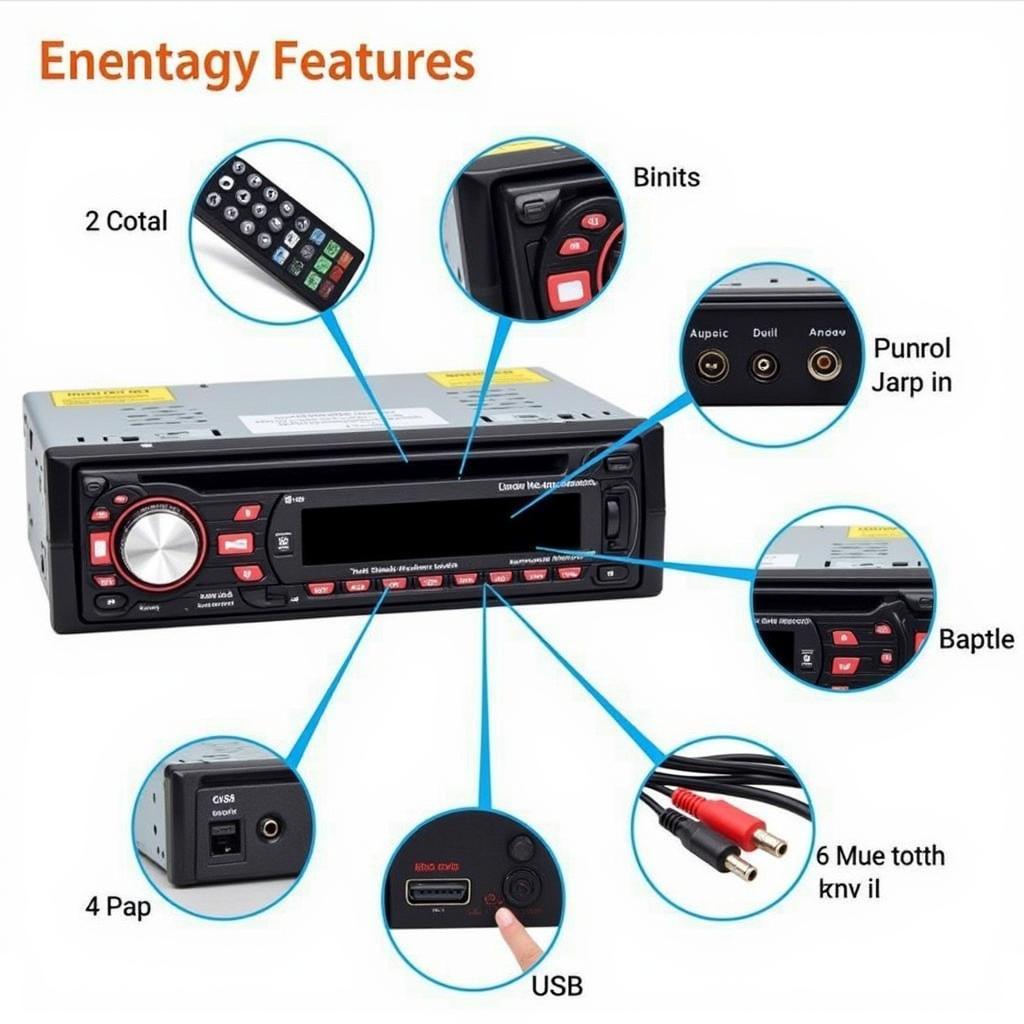A dead battery while driving is a scary and frustrating experience. It can leave you stranded and unsure of what to do. This article addresses the common causes of a “battery goes dead while driving” scenario, provides troubleshooting tips, and offers solutions to get you back on the road. We’ll explore everything from faulty alternators to parasitic drains, empowering you with the knowledge to diagnose and fix this issue. See our guide on car radio 99 corolla bluetooth aux usb for more car electronics information.
Understanding Why Your Battery Goes Dead While Driving
A vehicle’s battery is responsible for starting the engine. Once the engine is running, the alternator takes over, providing power to the electrical systems and recharging the battery. If the battery dies while driving, it’s a clear indication that something is disrupting this process.
Common Culprits: Identifying the Root Cause
Several factors can contribute to a dead battery while driving. Identifying the specific culprit is crucial for effective repair.
The Alternator: The Powerhouse of Your Car
The most common reason a battery goes dead while driving is a faulty alternator. The alternator acts as the vehicle’s power generator, recharging the battery and powering the electrical systems once the engine is running. A failing alternator can’t provide enough power, leading to a drained battery.
 Faulty Alternator Symptoms and Diagnosis
Faulty Alternator Symptoms and Diagnosis
Parasitic Drains: Silent Battery Killers
A parasitic drain occurs when an electrical component continues to draw power even when the car is off. These drains can range from a glove box light staying on to a faulty electronic control unit. Over time, even a small drain can deplete the battery, especially if the car isn’t driven regularly.
Bad Battery Cables and Connections: The Unsung Villains
Corroded or loose battery cables can disrupt the flow of electricity between the alternator, battery, and electrical systems. This can lead to charging issues and ultimately a dead battery while driving. Inspecting these connections is a crucial diagnostic step.
Faulty Voltage Regulator: Maintaining the Electrical Balance
The voltage regulator controls the voltage output of the alternator. A malfunctioning regulator can either overcharge or undercharge the battery. Undercharging will result in a dead battery while driving, while overcharging can damage the battery and other electrical components.
Troubleshooting a Dead Battery While Driving
If your battery dies while driving, try to pull over safely immediately. Once stopped, you can perform some basic troubleshooting.
-
Check the Alternator: Turn on your headlights. If they dim considerably while the engine is running, or if the battery warning light is on, the alternator is likely the problem.
-
Inspect Battery Cables and Connections: Look for any signs of corrosion or loose connections. Clean or tighten them as necessary. Sometimes this simple fix can resolve the issue.
-
Jump Start the Car: If you can jump-start the car, drive directly to a mechanic to have the electrical system diagnosed. Don’t turn the car off after jump-starting as it might not restart. You can find information on installing a new car radio with Bluetooth at can’t connect bluetooth car radio.
Preventing Future Battery Problems
Regular maintenance is key to avoiding a dead battery situation. Have your battery and alternator tested regularly, particularly in older vehicles. Keep the battery terminals clean and ensure the cables are securely connected. Also, be mindful of aftermarket accessories that might create parasitic drains. If you’re interested in upgrading your car’s sound system, check out our guide on installing Sirius satellite radio at how do you install sirius satellite radio in your car.
Conclusion
Experiencing a dead battery while driving can be alarming, but understanding the potential causes and troubleshooting steps can help you address the situation effectively. Regular maintenance and prompt diagnosis of electrical issues are vital for preventing future problems and ensuring your safety on the road. Don’t ignore the warning signs; taking proactive steps can save you time, money, and frustration in the long run. You can also explore options for upgrading your car’s entertainment system with a Raspberry Pi, as discussed in our article on raspberry pi car radio bluetooth. For information on Bluetooth car ports, visit car radio bluetooth car port.


